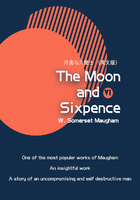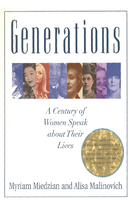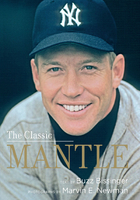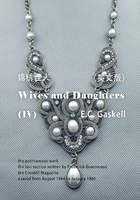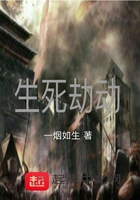The Boy on the Chair
My father, Ram Chopra, was born in 1945, in a town called Padhana. At the time, that was India. But, two years later, when India gained independence at the price of partition with the new nation of Pakistan, his family found itself one mile on the other side of the new border. They could still see India from their doorstep but, they decided, in light of the region's violence, to flee to New Delhi with whatever they could carry. There, his father Rishi was able to find employment, largely due to his rare commodity, a college degree. And he imparted the value of education in Ram, who excelled in school and eventually earned his own degree, in engineering, at the M.S. University of Baroda in Gujarat.
It was around that time that opportunity arose elsewhere; in 1965, both U.S. houses of Congress, in bipartisan fashion, passed the Hart-Celler Act to remove the annual caps on immigrants per country, including the countries of South Asia. Still in his early 20s, my father, like so many others around the world, found the prospect of America to be irresistibly appealing.[1] So he enrolled in Villanova University's graduate program in engineering. There, he would learn skills that would help him to earn three patents on refrigeration and defrost systems, which became embedded in products that remain operational today. Grateful for the opportunities that America had afforded him, his wife (also an Indian immigrant), and his two children (myself and my younger sister Monica), he instilled, and nurtured in me, his beliefs in education and innovation. He also emphasized giving back through civic participation.
All of the above serves to explain how, in 1983, I found myself on a plastic chair in a drab room on the second floor of a nondescript local government building in my hometown of Plainsboro, New Jersey. I had identified a problem, and, at age 11, was naive enough to believe that, if I merely brought the matter to an adult in authority, it would be solved. In building our subdivision, developers had failed to separate the public from the edge of Amtrak's train tracks. After I told my father that I had seen kids my age playing dangerous games near the tracks, he took me to one of Congressman Chris Smith's town hall meetings. There, I stood up, waved my arms, got the Congressman's attention, and asked if he would do something to secure the tracks, either through government action or collaboration with our local community. He thanked me, expressed concern, and pledged to look into it when Congress took up Amtrak funding.
No fence was ever built, but my faith was not lost. And my father made sure I wouldn't stop speaking up. As I progressed through high school, he would often speak in optimistic terms about all that a determined, creative person could accomplish. More often than not he would then provide an example of those who had played some role in solving the seemingly unsolvable. One such person happened to be a pioneer in emerging technology who, like my father, was a Baroda graduate.
That person, Sam Pitroda, had begun his formal education in a single-room school with no electricity in one of the poorest villages in rural India. He would earn a master's degree in physics, specializing in electronics, by age 21. After coming to America with $400 and never having used a telephone, he would go on to create 100 patents in telecommunications, fuel a startup that Rockwell International would acquire, and do groundbreaking work on the "electronic diary" in the early 1970s that laid the groundwork for mobile computing. Yet, what he would later achieve back in, and for, India would dwarf even his incredible feats in America.
During a trip back to India in the early 1980s, Pitroda attempted something that should have been simple; from an upscale hotel in the capital, New Delhi, he tried to call his wife in Chicago. But he couldn't get through. This caused him a minor inconvenience. For India as a whole, however, such telecommunications limitations had become a critical concern, isolating the country and, in Pitroda's assessment, endangering its ability to compete economically with the rest of the world. At the time, the country had more than 700 million people and fewer than three million telephones. Nearly all of India's 600,000 or so villages had no telephone access at all. If you wanted a line, you needed to wait, and wait, and wait. My own grandfather had experienced the interminable delays; after moving from a rural village to New Delhi in 1962, he waited nine years for a telephone line. Nor had there been much improvement in the decade since.
Pitroda wasn't willing to wait any longer for someone else to effect transformational change. For a mere rupee-per-year salary, he relocated to India to lead a monumental endeavor: extending digital telecommunications across the country, even to the least advanced and most remote areas, such as the village of his youth. He understood that the commercially available products of that time were outdated and suboptimal. They were analog systems in a world transitioning to digital. But digital systems for widespread, commercial use were not yet available in India, especially systems that could meet the country's unique requirements, with its heavily rural (and dispersed) population, and frequent power interruptions due to monsoons and other weather events. Pitroda believed a shift in mindset, from acquisition to innovation, could do the trick. Rather than invest billions in outdated technology, he organized a dedicated research and development effort charged with building India's solution on a foundation of newer digital technologies. The effort invited Indian firms to license the technology and build up a domestic manufacturing base to supply the country's telecom needs, so that everyone across its 600,000 rural villages could have access to telephone services by the turn of the century.
In a country of more than a billion people, Pitroda hired just 400 workers for a newly formed R&D lab called the Centre for Development of Telematics (C-DOT). He chose those with little or no experience but with a few key common characteristics: young (average age of 25), ambitious and optimistic, focused on possibilities rather than limitations. Free from the embedded bureaucratic restrictions of traditional government agencies, they pooled their recent engineering training and embarked on their Apollo mission. Within three years, they built four new telecom exchanges that met India's requirements. They innovated in numerous ways. For instance, they designed a refrigerator-size metal box that was able to keep telecom equipment cool and protected from the elements, without air-conditioning, and costing just $8,000. While a typical telephone equipment company would have invested hundreds of millions to design a comparable suite of products, Pitroda's innovation team spent less than $36 million. And they met their goal: every village in India got access to a telephone by the end of the century.
I must admit, some elements of the account were lost on me. Yes, I was Indian by heritage, but largely American by upbringing-I would visit India only once during my youth. We had phones in America, so it was hard to relate to the particular problem that Pitroda had addressed. Further, I didn't have an advanced understanding of the technologies involved; after all, as a high school student growing up in the 1980s, my idea of "hi-tech" was largely limited to what was needed to play Mike Tyson's Punch-Out on my Nintendo, to program at a primitive level on my Apple IIe, or to rewind a VCR tape.
Still, I appreciated Pitroda's passion and persistence, not merely in identifying a problem, but in finding a way to solve it. My father made sure that I understood another point: that Pitroda couldn't have done it alone, that his effort called for a sponsor in the Indian government, a collaborator capable of leadership and courage. After seeing the value in Pitroda's proposal, Rajiv Gandhi-son of India's then-Prime Minister Indira Gandhi-made it his cause too. While serving in his mother's cabinet, Rajiv chose to invest his political capital in pitching the project to other government officials. He tapped Pitroda, rather than someone currently occupying that bureaucratic turf, to plan and oversee the assignment. And he cleared the traditional bureaucratic obstacles to give Pitroda the power to recruit and deploy the qualified workers whom he deemed most appropriate for the assignment.
The lesson was that government could be an engine for good. I took that optimism into my years at West Windsor-Plainsboro High School, and while many of my classmates were competing in sports, I was doing so through Model UN, Mock Trials and Debate Club, and as Vice President of Student Council. My coach and mentor was the charismatic Brian Welsh, who taught an eclectic hands-on course called Introduction to Political and Legal Experience. It was a laboratory for critical and creative thinking against the backdrop of modern American democracy, and it inspired me to engage further in this area, outside of school walls.
That led to two formative experiences in the summer following 11th grade. At Boys State, a citizenship and leadership program sponsored by the American Legion, I learned the value of outreach, coalition building, and compromise, especially after I was selected to represent New Jersey as one of two Boys Nation senators, just as Bill Clinton had represented Arkansas in 1962. Through the course of a contentious Boys Nation debate about flag burning, I became acutely aware of the painful processes and significant concessions required for even incremental movement on polarizing issues. And that was just pretend. In Washington, D.C., the consequences of divisive debates were real, and I got a sense of them while serving an unpaid internship in a cramped corner of Senator Bill Bradley's mailroom. While sorting incoming correspondence into categories for Senator Bradley's policy staffers, I took note of one stack towering above the rest, the one consisting of letters calling for the repeal of the Medicare Catastrophic Coverage Act (MCCA). Curious to learn more, I dug into countless reports from the Congressional Research Service, and gained greater appreciation of the critical linkage between effective policy making and grassroots activism. The MCCA had been hailed as a victory for bipartisanship-a policy that lowered overall health costs for Medicare beneficiaries and added a new prescription drug benefit.[2] However, in order to pass the law, the entire cost of the bill was passed on to wealthier retirees, and their subsequent revolt led directly to its demise. When the dust settled, Congress' approach might have appeared correct on paper, but as follow-on surveys showed, less than 40 percent of the impacted Medicare beneficiaries even knew they would benefit from the program.[3]
After enrolling at the Johns Hopkins University, I was determined to expand my activism, and not to confine my collegiate education to a course syllabus. I engaged in a variety of extracurricular activities, from the mundane (lobbying student affairs for an air hockey table in our dorm) to the aspirational (organizing career advice semi-nars as sophomore class president). Yet all of these activities were confined by the technology of the times. In the early 1990s, we didn't have cell phones, we barely used campus e-mail, and we had no clue about how the nascent Internet would alter everything, socially and professionally, in the near future. We were still living largely in an off-line world, one that required door knocking and flyer posting to spread the word.
On rare occasions, that had its advantages, so long as you could be creative. That was the case during my junior year, after my college roommate Joseph Molko and I were chosen to cochair the next year's Milton S. Eisenhower Symposium, the largest student-run lecture series in the country. We recognized that our provocative topic ("The Changing Role of Sexuality in America") was no guarantee that we could afford worthy speakers and attract enthusiastic -audiences-for that, we would need to raise money and awareness. We also recognized, from our own experience, that incoming students would be eager to get an early glimpse of their classmates. Facebook, as we know it today, would not exist for another decade. So we invited incoming freshmen to submit photos and biographical information for a "Freshman Profile" book, and convinced the university to include an offer for the book (priced at $20) with its regular admissions and orientation mailers. We sold a bunch of books, which helped us attract a powerful lineup of speakers, including Camille Paglia, Angela Davis, Dr. Ruth Westheimer, and Ralph Reed, and, thus, large audiences. What is most remarkable to me, in retrospect, is that we did all of this without a web page. Forget social media, and all the promotional tweeting we could have done in this era. Think of how much a short previewing blog post could have helped. But while the first widely known browser, NCSA Mosaic, was released in September 1993, the same month that our series started, the Internet was still largely a mystery.[4] Even by the time I graduated the following spring, I was only peripherally engaged with the Internet, entirely unaware how it would shape the next 20 years of my life.
In the fall of 1994, I came to New York to work for Morgan Stanley as an investment banking analyst, as part of a class of nearly 100 people who trained together before being dispersed throughout the firm. I was in the health care group, but I had friends in other divisions, including several in the technology group. They were extremely excited about one transaction they were underwriting: the forthcoming public offering of Netscape Corporation, which was commercializing its Internet browser Navigator, a descendant of NCSA Mosaic. The Internet itself had its origins in 1969, with the birth of the Advanced Research Projects Agency Network (ARPANET) in the Department of Defense and the standardization of TCP/IP communications protocol (the primary method for routing messages across the network), under the leadership of Vint Cerf and Bob Kahn.[5] With funding support from the National Science Foundation Network (NSFNET), the network spread to universities and research labs through the 1980s. During the mid-1990s, the Clinton administration removed all remaining restrictions to widespread private sector use and commercialization. Web browsers would be the vehicle for democratizing the access. My colleagues in the technology group at Morgan Stanley believed that the Netscape IPO would spark a tech sector revolution with profound implications for the economy. They would be correct. The stock popped, and demand for it fueled a frenzied race between firms intent on underwriting the next big thing.
This much was plain to me: I needed to better comprehend this new technology platform, and its potential to influence America's cultural, sociological, financial, and political landscape well into the future, or else I would be limiting my own. That became my priority upon enrolling at the Kennedy School of Government at Harvard University for a two-year program starting in the fall of 1995. Twice, at Harvard, I benefited from a little providence. First, I spotted a job posting for a course assistant for a new class, Internet Policy, Business Strategy and the Law, a unique offering that drew students and faculty from three of Harvard's most prestigious graduate institutions. After landing the position, I got to observe the presentations and debates, and got a sampling of perspectives and predictions about where this new technology was taking us. Even better, I got to tinker with that technology, while developing, coding, and updating the course website.
Second, I boarded the right bus. When not biking to campus, I would sometimes cross the Charles River aboard the M2 shuttle, which was frequently transporting an accomplished innovator and practicing emergency room physician named Dr. John Halamka who, at the time, was also a graduate student in the Harvard-MIT program in Health Sciences and Technology. One day, Halamka shared the story of CareWeb, his latest side project.
Beth Israel Hospital and New England Deaconess Hospital, like many hospitals around the country, had recently agreed to merge in order to more effectively compete. In theory, the merger made sense, since the hospitals were across the street in Boston's famed Longwood Medical Area, and the resulting entity could lower costs by consolidating staffs and pooling purchases, allowing it to support service lines that would be unprofitable to support individually. In practice, it was quite a mess. The hospitals' medical records systems could not speak to each other, meaning that physicians at one hospital could not access the thousands of records trapped in legacy databases at the other. Conventional wisdom in such cases had argued for the construction of a giant centralized, monolithic system capable of performing all the applications one would need. Yet, the estimated expense of that undertaking, somewhere north of $50 million, would have blown all the projected cost savings of the merger.
Halamka proposed an alternative, one the executive team enthusiastically authorized him to pursue. Rather than replace the uncommunicative legacy systems, why not keep them functioning in the background, but use new Internet-based technologies to publish the data in the form of a web page at the point of care, when doctors and patients needed it? At a price tag of roughly $50,000, CareWeb was, in Halamka's words, a "quick, dirty and cheap" solution that delivered "probably 80 percent" of what a centralized, monolithic system might have produced, at about 0.1 percent of the likely corresponding cost. Most important, as he knew from his own experience as a physician, the solution would satisfy most medical professionals: If you are an emergency room physician or nurse, and you can pull up a patient's problem, medication, and allergy lists, as well as any relevant testing, "that's already pretty much enough to get you started," Halamka observed.
For getting the database fix done, he was made Chief Information Officer of the newly merged Beth Israel Deaconess Medical Center, and would later add the title of CIO for Harvard Medical School. Later, he would assume a public role as an appointed leader on health IT standards committees under Presidents George W. Bush and Barack Obama. His influence upon me was immeasurable. His success, in leveraging technology to find a frugal solution, shed light on a new path.
My backgrounds in banking and policy would have led me to examine the hospitals' problem in a completely different way. Both would start with the premise that the merger needed the centralized data system and that might cost close to $50 million. A banker might try to find the least costly equity or debt financing from the private sector. A policy maker might try to sell it as a "public good" project, in an attempt to offset some of the costs through government assistance, perhaps justified by arguing there would be savings in programs like Medicaid as a result of the investment.
Nothing in my experience had taught me to think like Halamka, to reimagine the project entirely, and consider substitutable approaches that might reach the objective at dramatically less cost. If Halamka could invent a $50,000 workaround, the traditional battles over whether or not to subsidize it, or to socialize the costs through higher private sector insurance premiums, might be moot.
Halamka's innovation mindset reminded me of my father's stories about Sam Pitroda. During my two years in Boston, I had encountered a higher concentration of South Asian students than in previous stops, which allowed me the opportunity to reconnect with my heritage. As the cofounder of the Boston chapter of the Network of South Asian Professionals, I was on the steering committee of the national organization's Tryst with Destiny conference (named after the famous line in Prime Minister Jawaharlal Nehru's inaugural speech as Prime Minister in 1947), to celebrate India's 50th anniversary of independence. We unanimously chose Pitroda as the keynote speaker, agreeing that his ingenuity and passion would inspire the audience.[6]
Plus, I just wanted to hear from him in person. By the time he took the stage in August 1997, I had moved to the next stage of my life, working for the Advisory Board Company, a Washington, D.C.–based global technology and research firm that, at the time, served hospitals, financial institutions, and corporate executives. As his silver mane whipped around, Pitroda passionately took me, and the other attendees, back in time. He transfixed the audience with his telecommunications tale and, after he finished, the applause started and didn't stop for more than a minute.
"You could feel in that room so much potential," Pitroda recalled during a conversation more than 15 years later. "I got a chance to speak for almost an hour, and the audience inspired me. I knew a lot of Indian-American kids were coming of age, bright young kids, -second-generation Americans, full of energy, enthusiasm, great education, great support from their parents, comfortable with themselves. I thought my message would be good for these kids, to do things for America and for the world, since the world by then had changed. This is the future of the world, not just America or India. These kids are going to create the world for everybody. Look what they can do."
While I had heard the story years earlier from my father, Pitroda's presentation seemed new to me, not just because it was firsthand, but because I was looking at it through a fresher, more sophisticated lens, one shaped not only by my Kennedy School education but my interaction with Halamka. At the Kennedy School, initiatives like the one Pitroda undertook would have been framed through the traditional battle lines of "big" versus "small" government, which would lead to spirited debates about how much money to allocate for the project and how to efficiently spend those funds. That, in turn, might lead to further disagreement about whether the service should be delivered by the government itself, or contracted out to a private firm.
What was typically missing from such a debate would be consideration of a smarter approach, one that focused on inventing a way to solve this problem for less cost and, perhaps, with less burdensome regulation. That approach required a problem solver taking advantage of the latest technologies. For Pitroda, working with the government in India in the early 1980s, that was the evolution from analog to digital telecommunications. For Halamka, working with two hospitals in Boston more than a decade later, the enabler was the evolution from point-to-point interfaces to Internet-based platforms.
What would it be for me, and my generation? There was no way to know at that moment, but over the course of my private and public careers, I would immerse myself in new technologies, using them to uncover more innovative approaches to solving problems.
Early in my nine-year tenure at the Advisory Board Company, I wrote a research study assessing the impact of Internet-based technologies on hospital and health systems. The study, written to aid hospital executives, afforded me the opportunity to revisit Halamka and profile his latest project: the New England Healthcare EDI Network (NEHEN). Halamka had been troubled by the waste inherent in the billing and payment transactions between hospitals and health care plans. Providers could burn five to 10 percent of their financial intake on endless reams of paperwork, much of it unrelated to the improvement of patient care, such as the appealing of denied claims or assembling seemingly endless documentation. Health plans, too, wasted resources in responding to those appeals.
Halamka convinced the health plans and the larger health systems that they would benefit from removing the friction from their dialogue, and that they could do so by joining an Internet-based network. That network would connect through simple open-source software in low-cost servers at the data centers of each participating institution. The result was a less expensive approach to automate a number of activities that had been performed by hand, if at all, such as checking the patient's insurance eligibility, managing provider referrals, and collecting payment. With minimal up-front investment, the members achieved dramatic savings in billing expenses, from the previous cost of roughly $5 a transaction to as low as 35 cents net of fees. Today, NEHEN processes more than eight million transactions a month.
By 1999, the booming Internet economy grabbed the attention of the Advisory Board Company's founder, David Bradley. He chose me to lead a new startup accelerator called Advisory Board Ventures. In that role, I would introduce him to promising technology companies for possible investment, while providing counsel to the existing portfolio. Our first partnership was with my close friend Reggie Aggarwal, founder of an events industry software startup, Cvent. Eventually, he would graduate from our incubator space to manage 750,000 events in 50 countries, employ over 1,000 people worldwide, and attract over $136 million in venture capital. And, by August 2013, he would raise $100 million in an initial public offering, valuing the company at more than $1 billion.
In addition to my Advisory Board Company work, I explored investment possibilities in the technology industry through Avatar Capital, an investment club that I cofounded with my cousin, Dr. Roger Sawhney. The club selected 17 deals in which to invest a collective $11 million in the initial funding rounds, including $100,000 in a company founded by Chet Kanojia to personalize the television experience; within the decade, Kanojia sold it to Microsoft for upwards of $200 million.
In the spring of 2000, the dot-com bubble burst. I left my Advisory Board Ventures role to focus on growing a new division within the firm as it prepared for its own initial public offering. The Advisory Board Company went public in 2001 and, over the next five years, I would move up the ladder, eventually serving as Managing Director and helping to grow our software analytics business. Ultimately, the proceeds of my stock options would dwarf my professional salary. Yet those financial rewards hardly represented the ultimate endgame. Nor did achieving some private sector success steer me away from my true passion of public service. While working at the Advisory Board Company, I was a gubernatorial appointee to volunteer positions on three separate committees: the Board of Medical Assistance Services (overseeing Medicaid), the Southern Technology Council, and the Electronic Health Records Task Force.
I still was the kid on the chair, telling a Congressman about the tracks. I still took inspiration from Sam Pitroda's story of sacrifice and success. I still wanted to see what I could do for my country, which appeared on the verge of transformational change thanks to revolutionary advances in technology. In the years to come, I would gather plenty of proof of what was possible in so many settings, when people stopped looking with puzzlement, helplessness, and anger at every seemingly unsolvable problem, and instead channeled their energy, harnessed technology, and focused on what they could do. Just look at what we did in Virginia.


